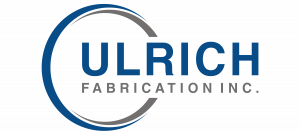Custom metal fabrication refers to the process of creating metal structures, components, or products that are tailored to specific requirements or designs. It involves the manipulation and shaping of various types of metal, such as steel, aluminum, stainless steel, or copper, to create a finished product based on the client’s specifications.
Custom metal fabrication typically involves several steps, which may vary depending on the complexity of the project. These steps can include:
- Design and Engineering: The process begins with understanding the client’s requirements and creating a design that meets their needs. This may involve CAD (Computer-Aided Design) software to create precise drawings and models.
- Material Selection: The appropriate type and grade of metal are chosen based on factors like strength, durability, corrosion resistance, and aesthetic appeal. The material is selected to match the specific application and requirements of the project.
- Metal Cutting: Once the design is finalized, the metal sheets or bars are cut into the required sizes and shapes. This can be done using various techniques such as sawing, shearing, or laser cutting.
- Metal Forming: The cut metal pieces are then shaped and formed according to the design specifications. This can involve processes like bending, rolling, stamping, or welding to create the desired shapes and structures.
- Joining and Welding: Different metal components may need to be joined together using welding techniques such as MIG (Metal Inert Gas) welding, TIG (Tungsten Inert Gas) welding, or spot welding. This ensures the structural integrity and strength of the fabricated metal product.
- Surface Finishing: The fabricated metal product may undergo surface finishing processes like grinding, sanding, polishing, or painting to enhance its appearance and protect it from corrosion.
- Quality Control: Throughout the fabrication process, quality control measures are implemented to ensure that the final product meets the required standards and specifications. This may include inspections, testing, and verification of dimensions and tolerances.
Custom metal fabrication can be utilized in various industries, including construction, automotive, aerospace, furniture, architecture, and many others. The process allows for the creation of unique and specialized metal products that cater to specific customer needs and design requirements.
Custom metal fabrication is a complicated process. When you have a project that requires it, look for a fabricator that has as many capabilities as possible under one roof. This approach will keep costs, time and hassle down to a minimum.
Ulrich Fabrication has you covered. Under their roof, their capabilities exceeds your requirements. View the details of our in-house facility at the Equipment page of our website. Contact us or get an instant quote today.
